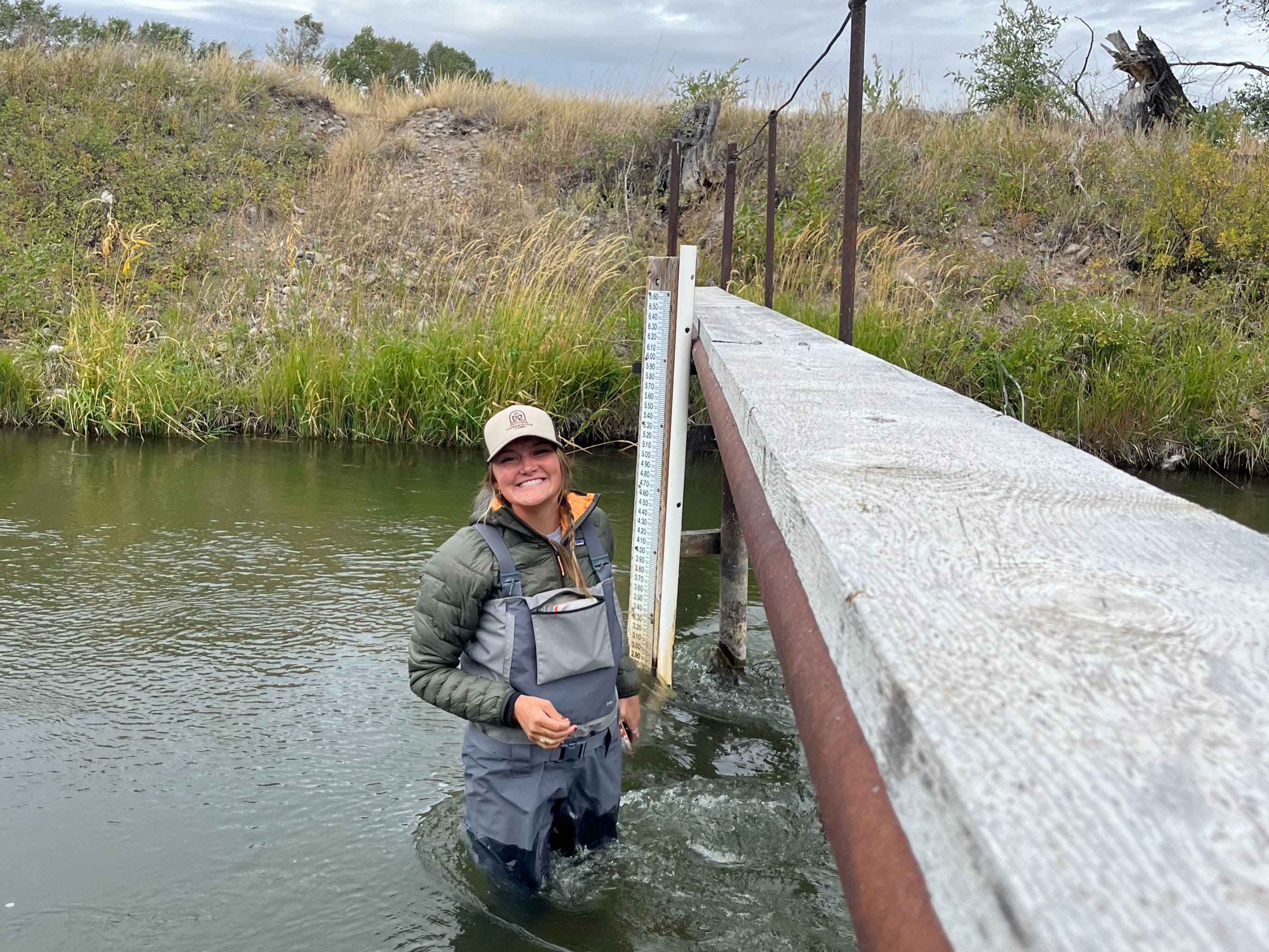
Meet Megan Moran, 2024 BSWC Member at Trout Unlimited. She studied salmonids in college in Washington, as salmon is a big part of WA culture - but she wanted to see something new. When she found the Big Sky Watershed Corps program, she thought it would be the perfect opportunity to try something different and experience another part of the United States. Since starting her AmeriCorps term this May, she has been responsible for various monitoring projects throughout Southwest Montana. Keep reading to learn more!
“MTU consistently aims to work with partner organizations and landowners to keep as much cold water in the rivers as possible. Trout do much better in colder water (34-67 degrees Fahrenheit) because cold water has more dissolved oxygen. This summer, we partnered with other organizations such as DNRC (Department of Natural Resources and Conservation) and FWP (Fish, Wildlife and Parks) to assist with their projects with similar goals.
Grayling CCAA Program: DNRC/FWP - Agreements between landowners and state agencies to keep as much water in the Big Hole river and its tributaries as possible. This agreement is mutually beneficial, as it also helps protect landowners should Grayling get listed on the Endangered Species List.
I've also been focused on the Jefferson Drought Management Plan. I have been monitoring 4 irrigation ditches in the Jefferson, collecting flow data that was then used in MTU (Montana Trout Unlimited) and JRWCs (Jefferson River Watershed Council) drought reporting. It was a very successful drought management plan season, and thanks to cooperation from land owners, we were able to keep the Jefferson river above the critical threshold value. Big thanks to everyone who participated in the drought plan and those who were mindful when recreating on the river this summer.
Parsons Slough monitoring: Point of diversion change project that will allow approximately 10 CFS (cubic feet per second) of cold spring water to continue into the river, and instead pump warm river water out for irrigation.
Boulder dam removal and ditch monitoring: Similar to Parsons Slough, the Boulder dam removal project includes a point of diversion change that will allow a local rancher to get enough water from the river. Additionally, the redesign of the dam area will divert water away from the current dam location without actually removing the dam, causing less disturbance to the stream.”
Moran says that her favorite part of being placed at Montana Trout Unlimited with the BSWC program is the ability to try different things and meet new people. The responsibility she has been given in this position has increased her confidence, and she says that the people that she met along the way truly made the experience. For more information on the monitoring projects that MTU is involved in, contact Megan at meganmoran73@gmail.com.
Written by Aleda Miller, BSWC Member for the Ruby Valley Conservation District for their October Newsletter

![[Image Description: Four MCC members wade across a river. In the background, there are hillsides covered in gold from the quaking aspens, and deep green pine trees.]](https://cdn.firespring.com/images/bc3da824-0c18-4b37-a2dd-27ae52872fd1.jpg)



